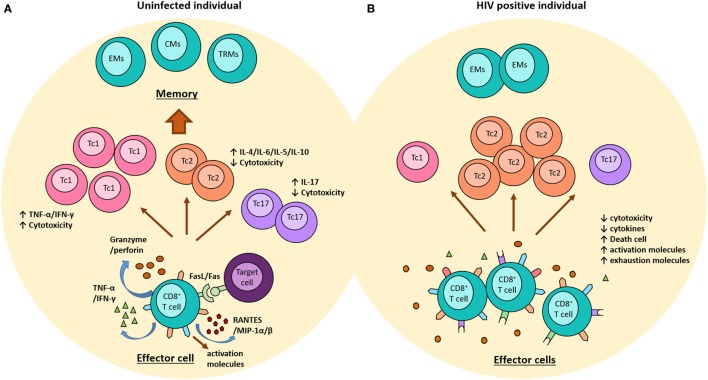Figure 1.
Role of CD8+ T cells in the context of the HIV-1 infection. (A) In uninfected individuals, once CD8+ T cells are activated, they acquire an effector phenotype characterized by high production of granzyme, perforin, and some pro-inflammatory molecules, such as RANTES and MIP-1α/β. In addition, these cells upregulate the expression of FAS-ligand. Some subpopulations of CD8+ T cells have been reported, including (i) Th1-like cytokine pattern (Tc1) cells have strong cytotoxic function and produce high levels of IFN-g and TNF-α; (ii) Th2-like cytokine pattern (Tc2) cells produce IL-4, IL-5, IL-6, and IL-10 and have lower cytotoxic ability; and (iii) Tc17 cells produce high levels of IL-17 but no granzyme. Once the pathogen is erradicated, the majority of effector cells die, and some become memory cells (EMs, effector memory cells; CMs, central memory cells, and TRMs, tissue resident memory cells). (B) During the chronic phase of the HIV-1 infection, the continuous viral replication induces the persistence of effector CD8+ T cells expressing high levels of activation markers, which progressively loss their functional activity and start expressing exhausting molecules, such as PD-1, CTLA-4, and Tim-3. This phenotype is characterized by low cytotoxicity and cytokines production. During this infection, there is a predominance of Tc2 cells and a reduction of Tc1 and Tc17. In addition, memory cells are decreased and there is a preferential differentiation into EMs.

